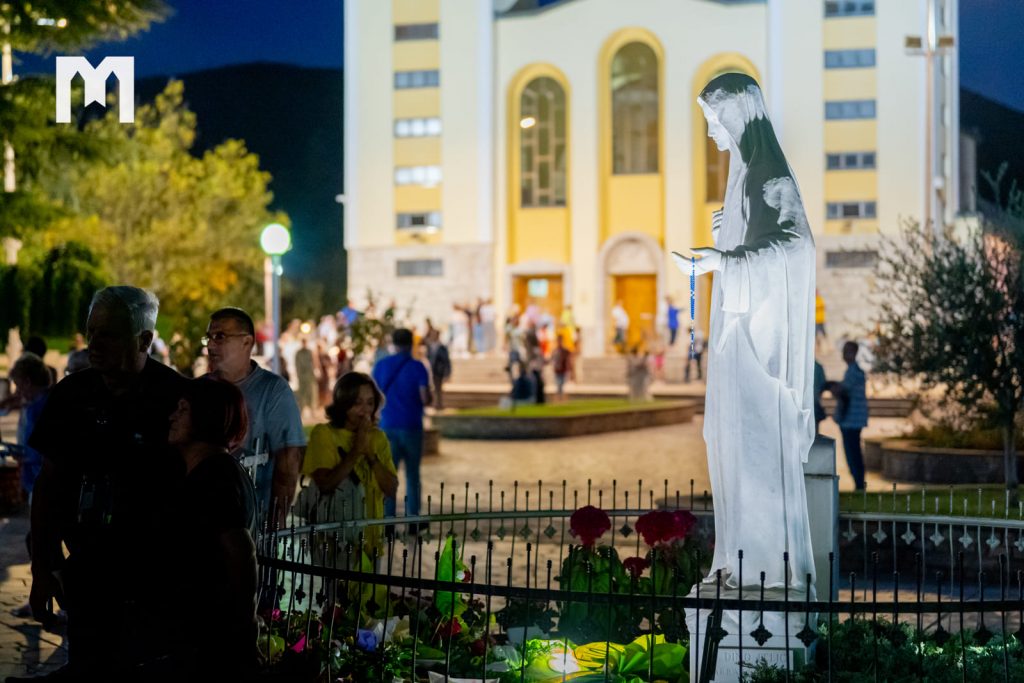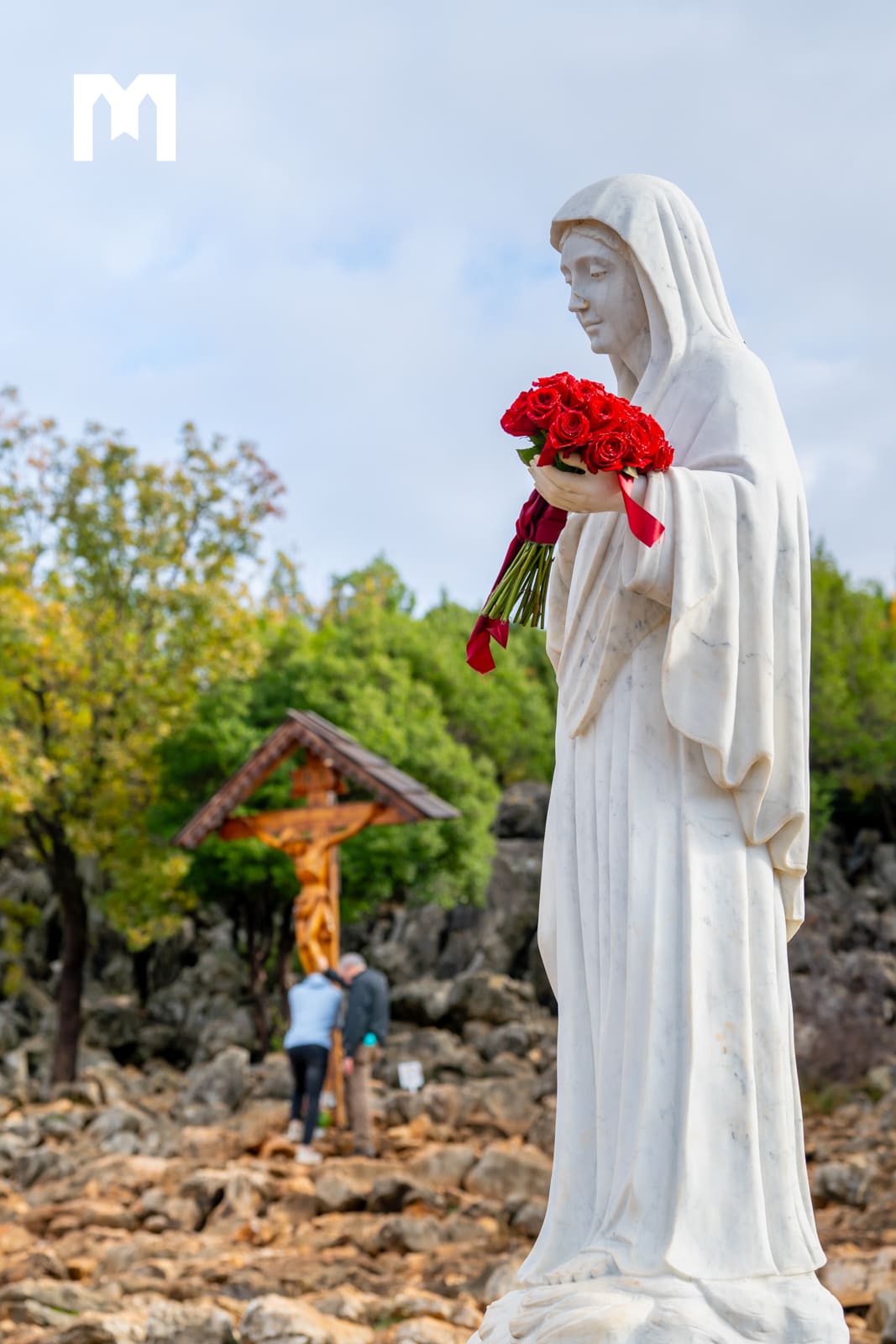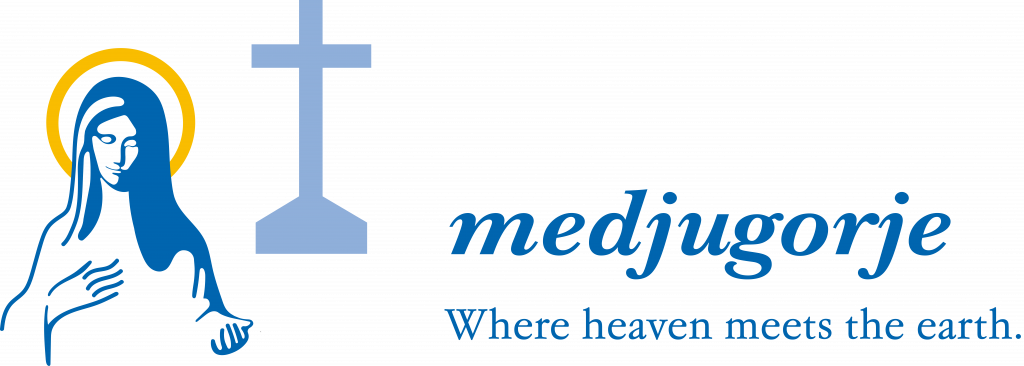The First Apparitions
Introduction
First Appearances of the Virgin of Medjugorje

The apparitions of the Virgin, in the small town of Medjugorje (Bosnia-Herzegovina), began in 1981 when the visionaries, six boys between ten and sixteen years old, saw the Virgin Mary on the mountain.
Since then, until today, millions of people from the five continents have visited Medjugorje to live a spiritual experience that, on many occasions, has changed the lives of those who have come there on pilgrimage as demonstrated by the thousands of testimonies of healing and conversion, as well as the hundreds of vocations, charitable works and new religious orders that have emerged since then.
What has been called “The Medjugorje Phenomenon” is nothing other than the experience of living the teachings that the Virgin has given to humanity throughout these years through her messages that remind us of the teachings of the church. in order to achieve peace in the world and the conversion of all souls through prayer, fasting, reading the Bible, the sacraments and the Eucharist.
It all began on June 24, 1981. This is the story of what happened in those first days.
Appearances at the End of the 20th Century

One fact to keep in mind to understand this period, as far as Medjugorje is concerned, is that for ten years, since June 25, 1981, the first day on which the Virgin Mary identified herself as such, under the invocation of the Queen of Peace, the apparition that the boys said they saw every day, was a powerful call to prayer and fasting for this intention of peace.
Leaving the benefit of the doubt to those people who think that the coincidence in the date between the beginning of the apparitions of the Queen of Peace and her urgent call to prayer for peace, with the beginning of this terrible war is not More than a bad whim of something called destiny, it is fair to remember here some words said by the bishop of Banja Luka, Mons. Franjo Komarica, collected in the book Medjugorje (Ed. LibrosLibres) in which he recalled: “There where God builds a church, the Devil always puts up a chapel.”
However, despite the atrocities experienced by the people of Bosnia and Herzegovina, war never made an appearance in Medjugorje. According to the locals of the village and the visionaries themselves, “the Virgin Mary protected us.” And it is true that just three kilometers from Medjugorje, in neighboring Citluk, hostilities did occur, but the town of Medjugorje, despite having been a priority objective of the Serbian military forces, did not suffer any human or material damage.
The Medjugorje Youth Festival (An annual meeting of testimony and prayer – always held the first week of August) takes on a significant role, around the Marian spirituality of the place. Not even during the war years was its celebration interrupted, to which thousands of pilgrims from all over the world have always attended.
Appearances at the Beginning of the 21st Century
At the beginning of the new millennium, Medjugorje is already a world-famous event within the Catholic Church. The fact that some supposed seers testify to a daily mystical experience for so many years without anyone being able to demonstrate any indication of falsehood, together with the thousands of testimonies of what in the Tradition of the Church are known as the good evangelical fruits – conversions, vocations, practice of the sacraments, etc. – that occur among the pilgrims of Medjugorje, means that the phenomenon does not stop growing, despite not having any type of institutional support from the Church at all. nor from any other entity of any kind.
It is at this time when the local bishop, the diocese of Mostar, contrary to the veracity of the phenomenon, and the Franciscans of Herzegovina, to which the priests of Medjugorje belong, sign the so-called Declaration of Obedience to the bishop, to avoid suspicion and susceptibilities within a Church in which everyone, those who believe in the authenticity of the Medjugorje Phenomenon and those who do not, profess a single obedience to the Pope of Rome, a single Apostolic Creed and a single pastoral meaning: the proclamation of the Gospel , without the Medjugorje issue being a point of contention in the essentials of Catholic pastoral care in Herzegovina, although it may be in something circumstantial.
This is a good place to rescue the statements of Brother Svetozar Krajlevic, chaplain of the Medjugorje parish in 2008 and the friar who had been there for the longest time, collected in the book Medjugorje (ed. LibrosLibres):

Tell us what is the situation between the parish of Medjugorje and the bishop of Mostar? What role has he played and is he playing in all this?
It is obvious, evident and clear, that the Church has a deep respect for Medjugorje. Starting with our bishop of Mostar and the other bishops of Bosnia and Herzegovina.
It is also known that our bishop does not believe in apparitions, but all of us, the eleven priests who are in the parish, have all the necessary permissions from our bishop. A few days ago we decided to rebuild the sacristy and we asked the bishop for permission, and he gave us the green light. Also all the priests who come from all over the world have all the permits that a priest must have to be a priest in Medjugorje.
Having said that, I think it is not the time to make any kind of speculation about the role of our bishop. I can’t make any assumptions. Although really, I have always seen the bishop’s ministry regarding Medjugorje in a positive way. Personally, I never had a problem with it. The only one I have had problems with is me, but never with the bishop.
The bishop is always an occasion for discipline in the Church, because regardless of whether the bishop believes in the apparitions or not, or whether we believe or not, we have the same faith. Therefore, we are in absolute union with the bishop. In absolute union in the faith of the Catholic Church, and in obedience to the bishop and the Church of Rome.
For us, the bishop is like a lighthouse in the night. Looking at the bishop we know which path to follow. That is the ministry that we and the bishop have, and we are in it together. That’s why the bishop feels very good when he comes here, to our parish, and we feel good with him.
Look, maybe the world will talk about how we and the bishop don’t get along. But that relationship that the world talks about is not important between us. What does matter is how well we get along regarding the crucial things of faith.
One of the most relevant things in these years is that Rome itself considered that the perception of the bishop of Mostar cannot be taken into account as an official criterion, neither definitive nor as part of an investigation, although respecting it as a personal opinion, obviously.
In 2007, the Vatican formed a Commission of Inquiry into the Medjugorje Phenomenon, which began field work and study in 2008 and, as long as it does not see any idea surrounding the phenomenon contrary to doctrine or healthy devotion to the Virgin Mary, and to traditional piety, it will not speak out until its
work is finished, which, probably not even the members of the Commission themselves will know when that will be.
Meanwhile, the Catholic faithful can make a pilgrimage to Medjugorje in complete peace and tranquility, as they do to so many other places in the world, letting those who are responsible for the investigation work in peace and confidence, and letting those who are responsible for the investigation go on pilgrimage with the support of the Church. whoever wants to do it freely.
Some sources claim that there have already been years in this first decade of the 21st century in which the number of two million pilgrims has been exceeded. The visionaries continue with their lives, the fruits continue to multiply, as do the media attacks coming from all types of press, Catholic and non-Catholic, and the Commission continues to investigate and monitor with the openness and prudence that an event like this deserves, with respect for so many testimonies of people who claim to have entered the Church through this door called Medjugorje.
In 2009, during the Youth Festival, more than 60,000 pilgrims from more than sixty different countries gathered. Some of the Eucharists of the event were concelebrated by more than six hundred priests and it was possible to see one of the afternoons of the event more than two hundred priests confessing around the parish, in a unique image today within the Catholic Church. This is a fact, not an opinion, and in this way it is reported on this Internet site that is simply nothing more than that, a channel of information, not opinion.
